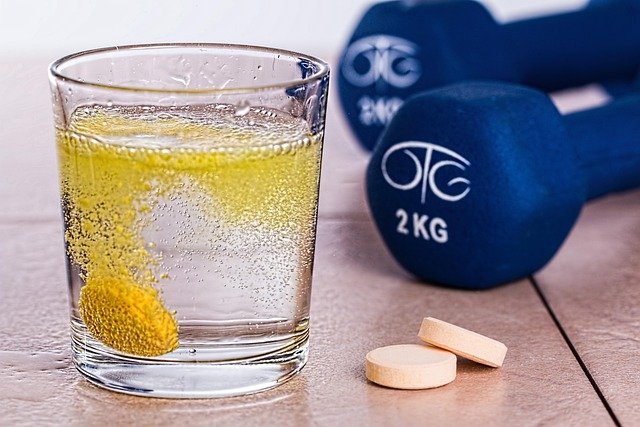Hydration and diet tips for healthy skin elasticity
Healthy skin elasticity depends on consistent hydration, nutrient-rich food, and regular movement. This article outlines practical dietary choices, hydration strategies, and lifestyle habits that support collagen production, maintain skin moisture, and help preserve tone and resilience over time. Simple adjustments to meals, fluids, and daily routines can deliver measurable benefits.

Healthy skin elasticity relies on multiple, interacting factors: sufficient water intake, specific nutrients that support collagen and elastin, regular movement that improves circulation, and restorative routines that reduce chronic stress. Addressing these areas together helps the skin retain flexibility, resist sagging, and recover more quickly after strain or minor injury. The following sections break down actionable guidance for nutrition, hydration, movement, recovery, and daily habits to preserve skin resilience.
How does nutrition affect skin elasticity?
Nutrition supplies the building blocks for structural proteins and supports the metabolic processes that keep skin supple. Protein-rich foods provide amino acids such as proline and glycine, necessary for collagen synthesis. Vitamin C acts as a cofactor in collagen formation, while zinc and copper support cross-linking of proteins. Omega-3 fatty acids help maintain cell membrane integrity and reduce inflammation that can degrade connective tissue. Including a variety of colorful vegetables, lean proteins, nuts, seeds, and oily fish in your mealplan ensures a range of vitamins, minerals, and essential fatty acids that collectively support skin structure and repair.
How much does hydration matter for elasticity?
Hydration affects skin turgor, barrier function, and the microenvironment needed for enzymatic processes that maintain connective tissue. Drinking adequate fluids helps transport nutrients to skin cells and removes metabolic waste, while topical moisturizers and humectants can reduce transepidermal water loss. Aim for regular fluid intake through water-rich foods (fruits, soups, leafy greens) in addition to plain water. Remember that individual needs vary with climate, activity level, and body size; signs of insufficient hydration can include persistent dryness, reduced skin plumpness, and slower wound healing.
What role does movement and exercise play in skin health?
Movement enhances circulation and lymphatic flow, delivering oxygen and nutrients to skin tissues and supporting waste removal. Cardiovascular activity, resistance training, and mobility-focused sessions each contribute: aerobic exercise improves overall circulation, resistance and conditioning support underlying muscle tone that helps maintain skin position, and mobility work preserves range of motion that reduces repetitive strain. Regular, varied exercise also promotes hormonal balance, which can indirectly benefit collagen maintenance and skin repair processes.
How do strength, mobility, and posture contribute to tone?
Building and maintaining muscle through progressive strength work gives structural support beneath the skin, reducing the appearance of laxity. Mobility training preserves joint function and tissue elasticity, preventing compensatory movement patterns that can accelerate tissue wear. Good posture reduces constant stretching or compressing of skin in certain areas, helping to avoid premature creasing and localized loss of tone. Incorporate targeted strength sessions, regular mobility routines, and posture checks into your conditioning plan to preserve underlying support and skin alignment.
How do sleep, recovery, and stress affect skin elasticity?
Restorative sleep supports tissue repair, collagen synthesis, and hormonal regulation. During deep sleep phases, growth hormone levels rise and cellular repair processes are more active; inadequate sleep impairs these functions and can accelerate visible signs of aging. Recovery strategies such as planned rest days, active recovery, hydration, and balanced nutrition help tissues rebuild after exercise. Chronic stress increases cortisol, which can break down collagen and impede repair; integrating stress management techniques—breathwork, short walks, or mindfulness—can protect skin resilience and overall wellness.
How to build a mealplan and routine for better skin elasticity?
Design a mealplan that emphasizes whole foods rich in protein, vitamin C, zinc, copper, and omega-3s. Sample inclusions: oily fish (salmon, mackerel), citrus and berries for vitamin C, legumes and lean meats for amino acids, nuts and seeds for trace minerals, and leafy greens for antioxidants. Spread protein intake across meals to support continuous repair. Pair food strategies with consistent hydration—water, broths, and water-rich fruits—and a movement routine combining cardio, strength, and mobility. Prioritize sleep hygiene and short daily recovery practices to reduce stress-related collagen loss. Small, consistent changes are more effective than sporadic extremes.
Conclusion
Skin elasticity is influenced by hydration, targeted nutrition, regular movement, and restorative habits. Focusing on protein and micronutrients that support collagen, maintaining steady fluid intake, engaging in strength and mobility work, and protecting sleep and recovery create a supportive environment for resilient skin. These measures work together to preserve tone, reduce inflammation, and help the skin adapt to daily stresses without relying on single interventions.





